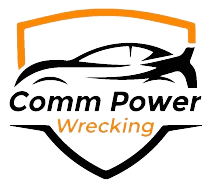Introduction
Auto wrecking, or the business of recycling and salvaging end-of-life vehicles, is an industry that has been quietly evolving over the years. Traditionally, it has been seen as a sector focused on salvaging and selling auto parts, but it’s now transforming in response to various factors, including environmental concerns, technological advancements, and changing consumer behaviors. In this article, we will explore the future of the auto wrecking industry, delving into the emerging trends and challenges that are shaping its path.
The Green Revolution
One of the most significant trends reshaping the auto wrecking industry is the focus on environmental sustainability. As the world grapples with the consequences of climate change, businesses across sectors are pressured to reduce their carbon footprint. Auto wrecking is no exception. Salvaging and recycling vehicles not only prevent tons of metal and plastics from ending up in landfills but also reduce the need for raw materials and the energy required for manufacturing new auto parts.
- Rising Demand for Electric Vehicle (EV) Recycling: As electric vehicles become more popular, there’s a growing need for recycling their complex batteries and components. Auto wrecking businesses are adapting to this by investing in the technology and know-how to safely dismantle and recycle lithium-ion batteries.

- Sustainability Certifications: In the future, auto wrecking businesses may seek sustainability certifications that demonstrate their commitment to eco-friendly practices, attracting environmentally conscious consumers.
- Increased Scrutiny on Pollution Control: Stricter environmental regulations are likely to emerge, putting pressure on the industry to improve pollution control measures during the wrecking and recycling process.
Digital Transformation
Just like other industries, auto wrecking is undergoing a digital transformation. Technology is playing a crucial role in streamlining operations, enhancing customer experiences, and increasing the efficiency of these businesses.
- Online Parts Sales: Auto wrecking businesses are increasingly establishing online platforms to sell their salvaged auto parts, making it easier for customers to find and purchase the parts they need.
- Inventory Management: Advanced inventory management systems are being implemented to track and organize the vast number of auto parts in salvage yards.
- Data Analytics: Big data and analytics tools are helping auto wrecking companies optimize pricing, reduce waste, and predict market trends.
- Blockchain for Transparency: Blockchain technology may be used to provide transparency and traceability for the parts, assuring customers of the quality and origin of the components they buy.
Consumer Behavior and Expectations
The way consumers approach auto wrecking is changing. Sustainability and cost-efficiency are driving these changes.
- DIY Auto Repair: More consumers are taking the DIY approach to auto repair. They are turning to wrecking yards to source affordable parts for their projects.
- Conscious Consumption: Eco-conscious consumers are choosing salvaged auto parts as an environmentally friendly and cost-effective alternative to new parts.
- Demand for Rare and Vintage Parts: Collectors and enthusiasts are driving demand for rare and vintage auto parts, and auto wrecking businesses are catering to this market.
Challenges in the Auto Wrecking Industry
While there are promising trends, the auto wrecking industry also faces several challenges as it evolves.
- Environmental Regulations: As mentioned earlier, stricter environmental regulations will require significant investments in pollution control and sustainable practices, which may be costly for smaller businesses.
- Technological Adoption Costs: Not all auto wrecking businesses may have the financial resources or technical expertise to keep up with the digital transformation.
- Competition: The growth of online marketplaces for auto parts has increased competition, making it more challenging for some businesses to stand out.
- Consumer Education: Many consumers are still unaware of the benefits of auto wrecking and the quality of salvaged parts, which means more efforts are needed for education and marketing.
Conclusion
The auto wrecking industry is at a crossroads, facing both opportunities and challenges. It is transforming to meet the demands of environmentally conscious consumers while leveraging technology to enhance efficiency and customer experiences. The challenges, including environmental regulations and increased competition, should not be underestimated. However, with innovation and adaptation, the auto wrecking industry is poised to remain a sustainable and relevant part of the automotive ecosystem. As the industry continues to evolve, it is imperative for stakeholders to work collaboratively to ensure its future success.


No comment